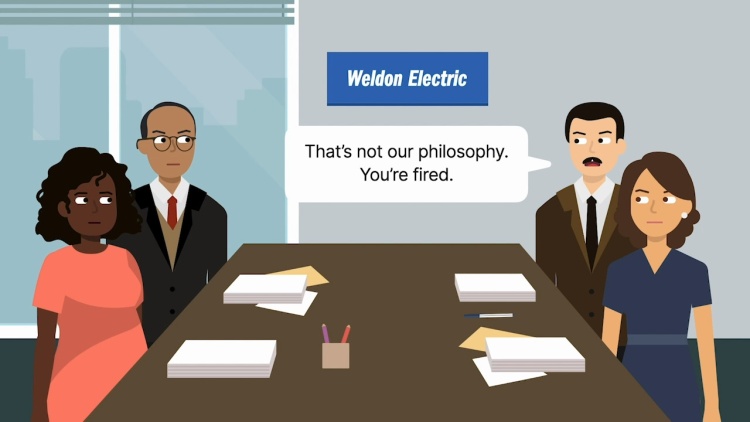Balvik v. Sylvester
North Dakota Supreme Court
411 N.W.2d 383 (1987)
- Written by Samantha Arena, JD
Facts
In 1979, Elmer Balvik (plaintiff) and Thomas Sylvester (defendant) formed a partnership called Weldon Electric. Balvik quit his prior job and contributed $10,000 to Weldon’s assets, and Sylvester contributed $25,000. Each maintained equal rights in management of the business. In 1984, Balvik and Sylvester incorporated Weldon, with Sylvester receiving 70 percent of the stock and Balvik receiving 30 percent, in proportion to their contributions. Sylvester, Balvik, and each of their wives were Weldon’s four directors. According to the bylaws, shareholders were entitled to one vote per share of stock owned, which gave Balvik a minority interest in control of the company. In 1985, Sylvester and Balvik had a falling out and Sylvester fired Balvik as an employee. Balvik then filed suit against Sylvester seeking Weldon’s dissolution, or payment of the true value of his stock. Specifically, Balvik contended that Sylvester had oppressed Balvik by using his majority control to fire him. At Weldon’s annual shareholder meeting the following year, Sylvester used his 70-percent vote to amend the bylaws, reducing the number of directors and removing Balvik from the board. Balvik received no compensation from the corporation. The trial court found in Balvik’s favor, concluding that Sylvester was guilty of oppression, and that Sylvester’s conduct formed the basis for Weldon’s dissolution. Sylvester appealed.
Rule of Law
Issue
Holding and Reasoning (Walle, J.)
What to do next…
Here's why 899,000 law students have relied on our case briefs:
- Written by law professors and practitioners, not other law students. 47,000 briefs, keyed to 994 casebooks. Top-notch customer support.
- The right amount of information, includes the facts, issues, rule of law, holding and reasoning, and any concurrences and dissents.
- Access in your classes, works on your mobile and tablet. Massive library of related video lessons and high quality multiple-choice questions.
- Easy to use, uniform format for every case brief. Written in plain English, not in legalese. Our briefs summarize and simplify; they don’t just repeat the court’s language.





